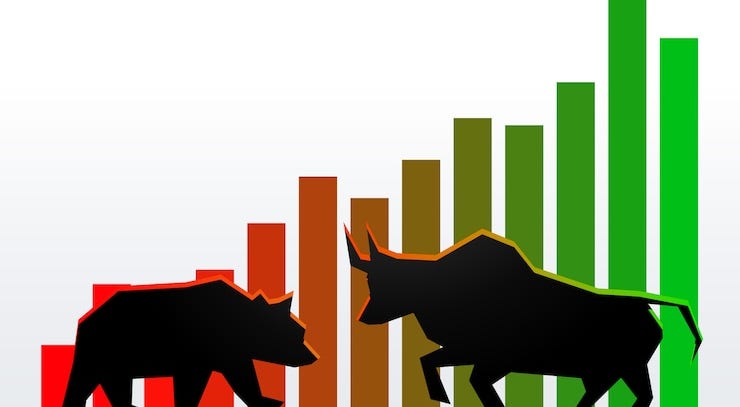
AI Insights:
Simple Explanation:
Key points:
- US stocks higher, producer prices rise 0.6% in February
- Silver and copper prices change slightly
- European shares mixed, eurozone inflation rate drops to 2.8%
- Asian markets close mixed, Hong Kong manufacturing production increases, Indian wholesale prices also up
Summary:
In simple terms, this article is about how the US stock market did well and some things that were bought and sold more expensive in February. The prices of silver and copper changed a little bit. In Europe, some countries' stock markets went up, while others went down. Also, the cost of living in Europe became a little cheaper. In Asia, some countries' stock markets did good, but others didn't do so well. Hong Kong made more things than before, and India sold more things at a higher price.
Read from source...
Critical Perspective:
1. The title of the article is misleading and does not reflect the content properly. It implies that US stocks are higher because of producer prices rising, but there is no clear causal link established between the two events.
2. The article lacks a coherent structure and transitions between paragraphs. It jumps from one topic to another without providing any context or explanation for the change of focus. This makes it difficult for readers to follow and understand the main points.
3. The use of abbreviations such as FSR, APM, CME Group, etc. is confusing and unnecessary. These terms are not widely known by general audiences and do not add any value to the article. A simple definition or explanation would have been helpful for readers who are unfamiliar with these terms.
4. The article relies too much on secondary sources and does not provide any original analysis or insights. It mostly reports facts and figures without offering any interpretation or evaluation of their significance or relevance. This makes the article less informative and engaging for readers who want to learn more about the topic.
Investment Analysis:
We are not financial advisors. It's always essential for you to consult with a financial advisor and do your research before making any decisions about investments.
There are several factors to consider when making investment decisions, such as market trends, economic indicators, company performance, and risk tolerance. In this case, the article provides some insights into the recent stock market movements and inflation rates in different regions. Here are my suggestions for potential investments based on these factors:
1. Fisker (NYSE:FSR): This electric vehicle manufacturer has been gaining momentum in the past few months, with its shares rising more than 20% since the beginning of the year. The company recently announced a partnership with Magna to produce its first affordable mass-market EV, which could boost its growth potential and profitability. However, there are also some risks involved, such as competition from other EV makers like Tesla (NASDAQ:TSLA) and Rivian, as well as the uncertainty of the global supply chain for batteries and semiconductors. Therefore, FSR could be a high-risk, high-reward investment option for those who believe in the long-term future of the EV industry.
2. Aptorum Gr (NASDAQ:APM): This biotechnology company focuses on research and development of therapeutics and diagnostics for diseases with unmet medical needs, such as cancer, neurological disorders, and infectious diseases. The company has a strong pipeline of products in various stages of clinical trials, which could generate significant revenue if successful. However, there are also some challenges ahead, such as the regulatory approval process, the competition from other biotech companies, and the potential impact of the COVID-19 pandemic on its operations. Therefore, APM could be a medium-risk, medium-reward investment option for those who are interested in the healthcare sector and believe in the company's innovation and potential.
3. US stocks: The article mentions that US stocks were higher, which indicates a positive sentiment in the market. However, this could also be influenced by factors such as the Fed's monetary policy, the fiscal stimulus package, and the corporate earnings reports. Therefore, investing in US stocks could be a moderate-risk, moderate-reward option for those who want to diversify their portfolio and benefit from the potential growth of the US economy.
4. Inflation-protected bonds: As mentioned in the article, producer prices rose 0.6% in February, which could signal an increase in inflationary pressures. Inflation-protected bonds are a type of fixed income security that provides protection against inflation by adjusting the principal and interest payments accordingly. Therefore, investing in inflation-protected b